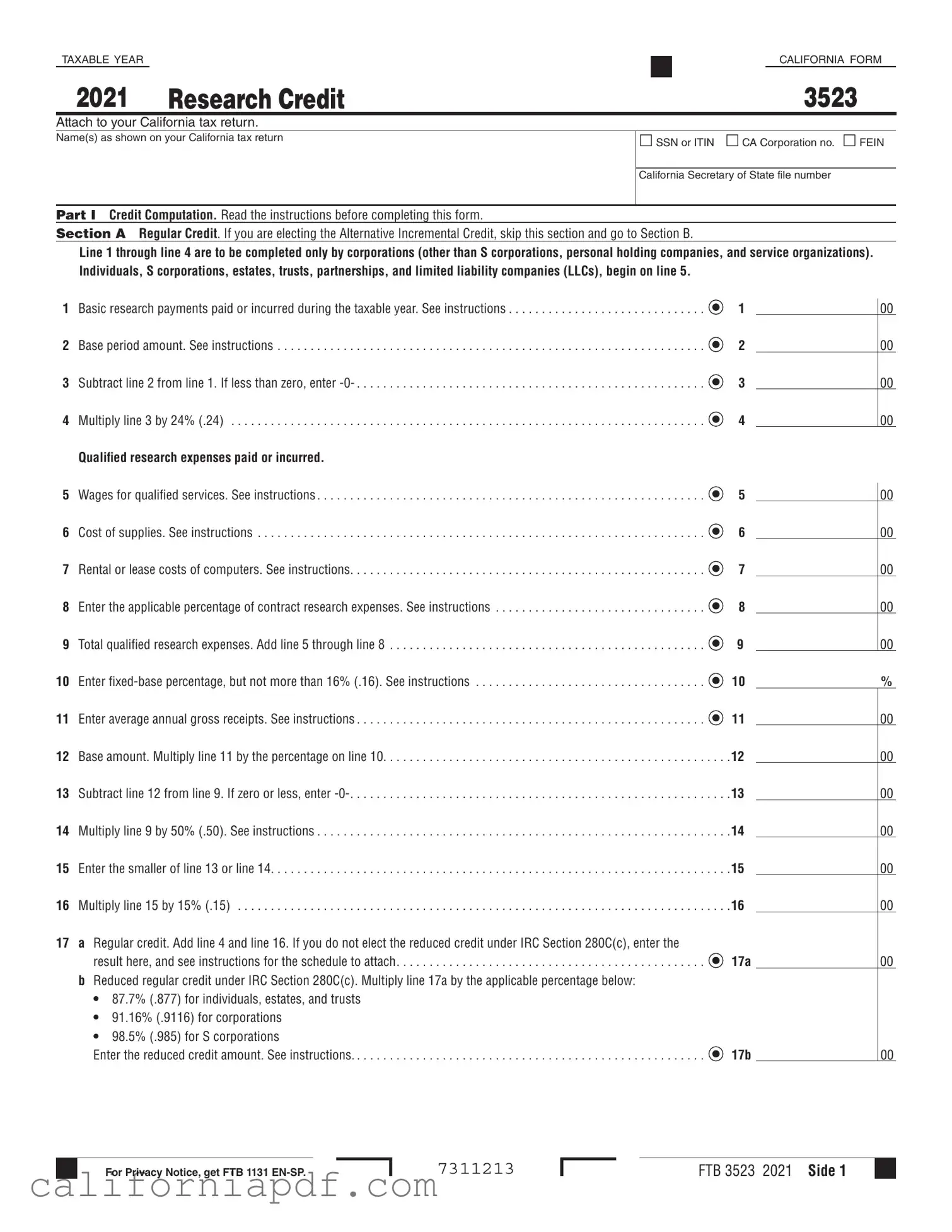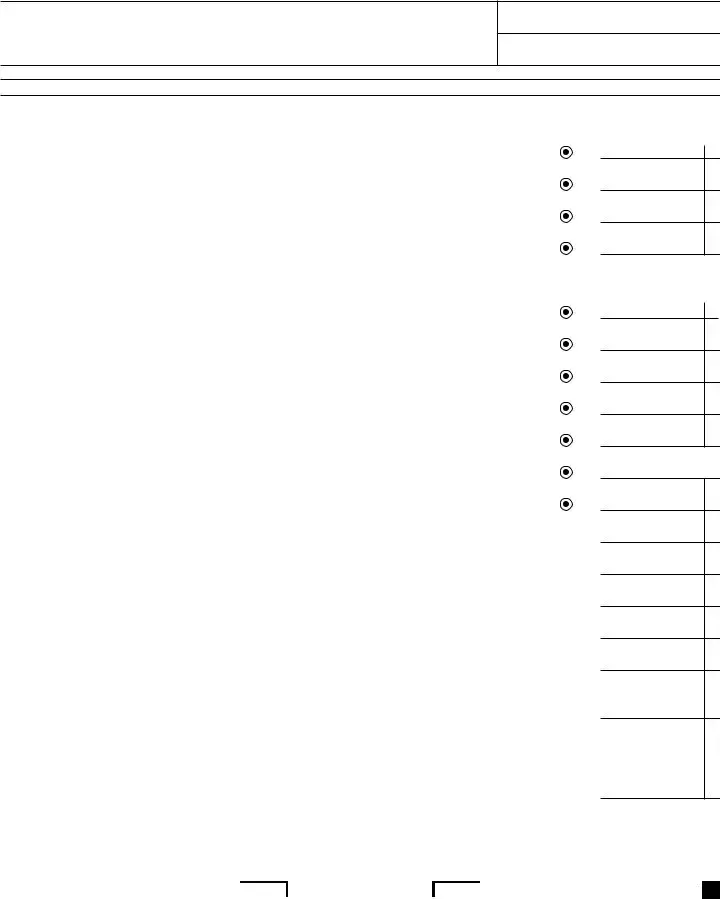40 Pass-through research credit(s) from S corporations, estates, trusts, partnerships, and LLCs. See instructions . . . . . . . .  40
40
41Current year research credit. If you did not elect the reduced credit under IRC Section 280C(c), add line 17a or
line 39a to line 40 and enter the result here. If you elected the reduced credit under IRC Section 280C(c),
add line 17b or line 39b to line 40 and enter the result here . . . . . . . . . . . . . . . . . . . . . . . . . . . . . . . . . . . . . . . . . . . . . . . .  41
41
42Enter the amount of credit on line 41 that is from passive activities. If none of the amount on line 41 is from
passive activities, enter -0- . . . . . . . . . . . . . . . . . . . . . . . . . . . . . . . . . . . . . . . . . . . . . . . . . . . . . . . . . . . . . . . . . . . . . . . . . . . . .42
43 Subtract line 42 from line 41 . . . . . . . . . . . . . . . . . . . . . . . . . . . . . . . . . . . . . . . . . . . . . . . . . . . . . . . . . . . . . . . . . . . . . . . . . . . .43 44 Enter the allowable credit from passive activities. See instructions . . . . . . . . . . . . . . . . . . . . . . . . . . . . . . . . . . . . . . . . . . . . . . .44
45Non-passive activity credit carryover from prior year. (Do not include credits received through assignment.)
See instructions. . . . . . . . . . . . . . . . . . . . . . . . . . . . . . . . . . . . . . . . . . . . . . . . . . . . . . . . . . . . . . . . . . . . . . . . . . . . . . . . . . .  45
45
46 Total. Add line 43 through line 45. . . . . . . . . . . . . . . . . . . . . . . . . . . . . . . . . . . . . . . . . . . . . . . . . . . . . . . . . . . . . . . . . . . . .  46
46
PART II Carryover Computation. Combined Report Filers see instructions for Part III before completing this part.
47Credit claimed. Enter the amount of the credit claimed on the current year tax return. See instructions.
(Do not include any assigned credit claimed on form FTB 3544, Part B.) . . . . . . . . . . . . . . . . . . . . . . . . . . . . . . . . . . . . . .  47
47
48Total credit assigned. Enter the total amount from form FTB 3544, Part A, column (g). If you are not a corporation,
enter -0-. See instructions. . . . . . . . . . . . . . . . . . . . . . . . . . . . . . . . . . . . . . . . . . . . . . . . . . . . . . . . . . . . . . . . . . . . . . . . . .  48
48
49 Credit carryover available for use or assignment for future years. Subtract lines 47 and 48 from line 46 . . . . . . . . . . . . . .  49
49




















